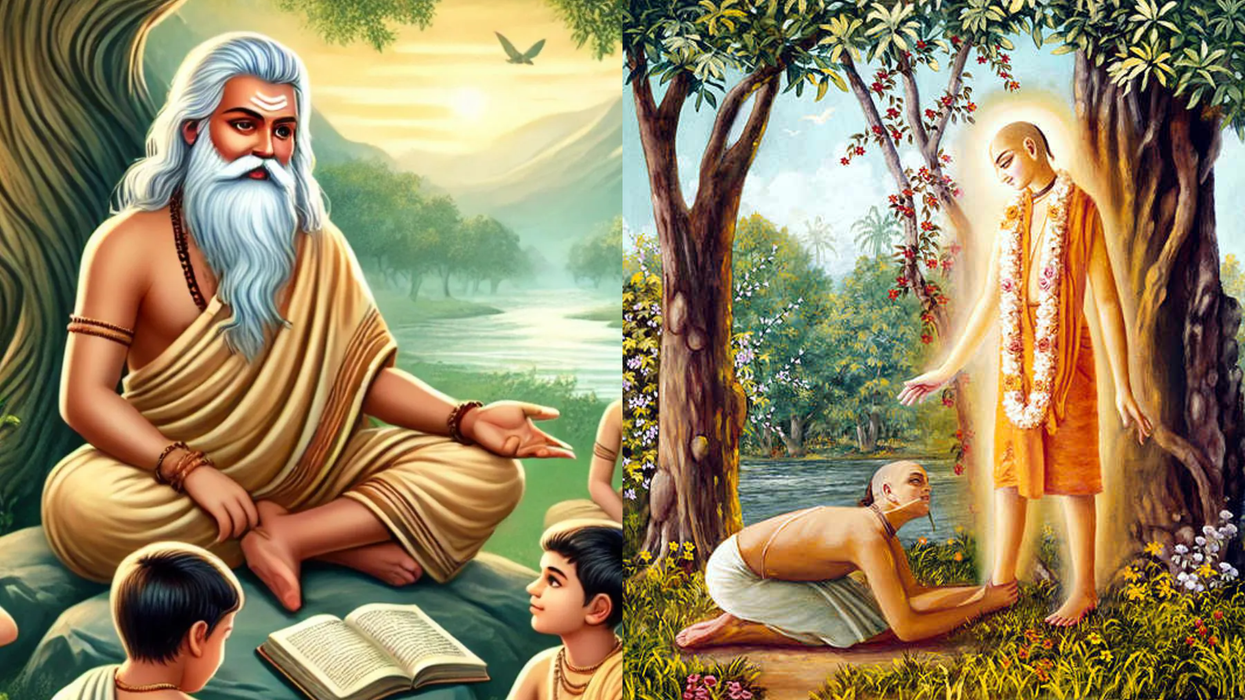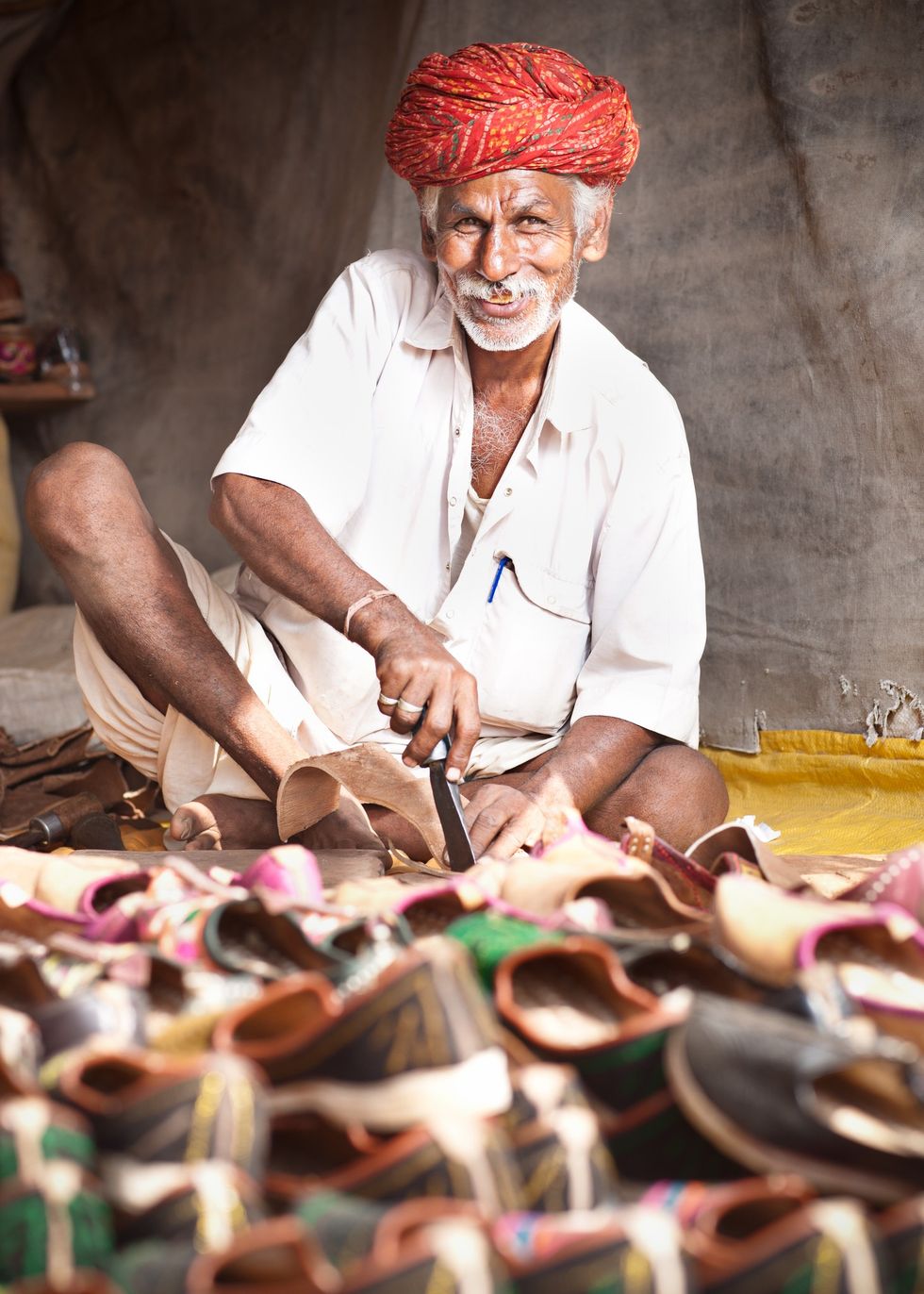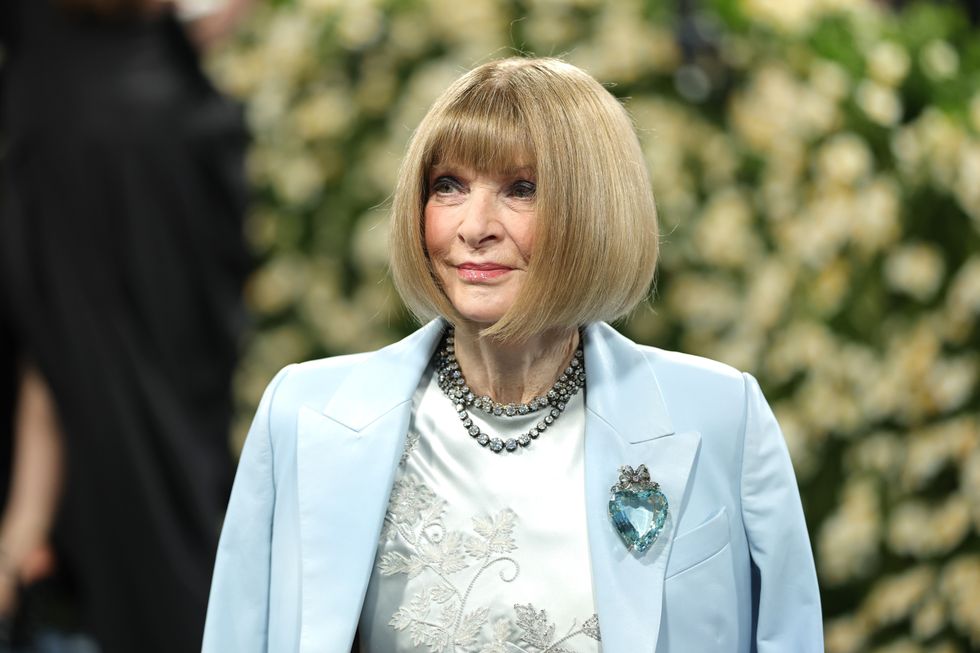Dharmic religions or religions that have their roots in India, namely Hinduism, Jainism, Sikhism and Buddhism, have a very interactive relationship with spiritual leaders and Gurus. Going back tens of thousands of years, saints have influenced and guided Hindu society. The most powerful king would respect his Guru or a saint and act upon his instructions. These sages typically lived in forests in pursuit of a spiritual life. They were also experts on issues that related to running a peaceful and just society. They were conversant in warfare and the art of diplomacy.
When a holy man or a saint made an entry into an assembly of politicians, the whole gathering including the king would stand up to receive him. The king would touch the feet of the sage as a mark of great respect. This tradition of touching the feet of a Guru or an elder is still prevalent in India today. Children will typically touch the feet of elders as a form of greeting. There is something magical about bowing down to your seniors or your mentors. There is humility, respect and a soul to soul meeting.
The Ramayana mentions how King Dashratha had to agree to send his two children Rama and Laxmana to fight demons on the demand of sage Vishvamitra. In a Hindu’s life, the Guru plays a role from birth to death. The blessings of a Guru are sought for a new baby and at certain intervals in life, a child will go through different initiation processes with the help of a Guru. His marriage will be conducted by a priest with Sanskrit chanting.

To buy a house, to start a business or to begin a construction project, a Guru will guide and bless. This tradition continues even today. In Jainism and Buddhism, society is formally divided into householders and monks. In both traditions, the fellowship of monks is called Sangha. It is the sacred duty of the householder to look after the mendicants. Jain saints can sanction any activity according to the situation. They can ask for a place of worship to be built or a school, hospital or animal sanctuary and the community will willingly oblige.
Buddhism has a similar setup. Buddhist monks play a very active role in Buddhist society. In Sikhism too, Gurus are highly revered and Sikh saints guide the Sikh society. When one goes to India, one can observe this dynamic relationship between the householders and the monks. This special mechanism has served the Hindu society well throughout history. The influence of Hindu monks on the lives of the laity contributes to the dynamism and adaptability of the Hindu religion.
While there is no single, universally accepted definition or dogma, the diverse interpretations and practices within Hinduism are often shaped by the teachings and roles of monks who serve as spiritual guides. They maintain the continuity of traditions while also adapting them to the changing times. This flexibility to adapt to a continuously changing world is a great asset and prepares the masses to embrace change.
This can be observed in India today, which has become a hub for digital inventions. Indians dominate leading cutting-edge futuristic companies in the US. India stands on the brink of a digital revolution poised to transform its economy and society. By 2030, the digital sector is projected to grow fourfold, offering an additional opportunity worth 900 billion dollars.

The exploits of the great Guru Chanakya, also known as Kautilya and Vishnugupta, are the stuff of legend. Chandragupta Maurya was one of the greatest Hindu kings of the 4th century BCE. Under the guidance of his Guru Chanakya, he extended his empire from the Hindu Kush in the northwest to Bengal in the east, and from the Himalayas in the north to the Narmada River in the south.
His empire encompassed almost the entire Indian subcontinent, excluding modern-day Kerala, Tamil Nadu and Sri Lanka. It included modern-day Afghanistan, Pakistan, Bangladesh and parts of present-day Iran. Chandragupta Maurya defeated Seleucus I Nicator, a Greek general, in the Seleucid–Mauryan War around 305–303 BCE. The resulting treaty of Indus gave Chandragupta control over the eastern satrapies and formed a marriage alliance with Seleucus.
Chanakya also served as the prime minister to Chandragupta Maurya and his son Bindusara. Chanakya's treatise on war and peace, the Arthashastra, makes Machiavelli look very tame. Machiavelli was a 16th-century Italian philosopher who proposed that acquiring and maintaining a state may require cunning and immoral means. A Machiavellian politician today is described as one who is cunning and duplicitous.
The Arthashastra, written in Sanskrit, talks about statecraft, politics, economic policy and military strategy. It is considered a foundational text on governance and diplomacy. Chanakya proposed five ways of dealing with enemy states. They were making peace (samdhi), waging war (vigraha), doing nothing (asana), preparing for war (yana), and dual policy or alliances (dvaidhibhava).

In a constantly evolving world, having a living Guru to guide you through an increasingly complex society is a great advantage. Famous Gurus like Maharishi Mahesh Yogi, Sri Sri Ravishankar, Sadhguru Jaggi Maharaj, A.C. Bhaktivedanta Swami Prabhupada, Mahant Swami, Swami Ramdev and many others have millions of followers all over the world.
These Gurus are overwhelmingly celibate monks. By using their senses in pursuit of God alone, they develop spiritual powers which they apply in protecting Dharma and helping worldly people trapped in Maya, the illusion of material and sensory enjoyment. They represent a stark contrast to the Abrahamic religions. Ahimsa, vegetarianism, yoga, meditation, and controlling your inner enemies like anger, pride, hate, jealousy, greed and lust is what these Gurus preach.
It is this message that Swami Vivekananda first brought to America. He won over the assembled gathering of leaders of world religions at the Parliament of the World's Religions in Chicago on September 11, 1893, by beginning with "brothers and sisters of America". There is no agenda to convert others or to belittle other religions.
Above all, the final goal for a Guru is to go back to God's kingdom and escape the cycles of births and deaths. The Guru, therefore, is very conscious of his own journey while doing his best to bring peace and contribute to the dynamism and adaptability of the Hindu religion.
(Nitin Mehta is a writer and commentator on Indian culture and philosophy. He has contributed extensively to discussions on Hinduism, spirituality, and the role of Gurus in modern society. You can find more of his work at www.nitinmehta.co.uk.)






 Prada confirms Kolhapuri chappals inspired its 2026 Milan collectionInstagram/
Prada confirms Kolhapuri chappals inspired its 2026 Milan collectionInstagram/ Kolhapuri chappals have been crafted for centuries and received GI tag in 2019 iStock
Kolhapuri chappals have been crafted for centuries and received GI tag in 2019 iStock 








 Wintour also became synonymous with the Met GalaGetty Images
Wintour also became synonymous with the Met GalaGetty Images

